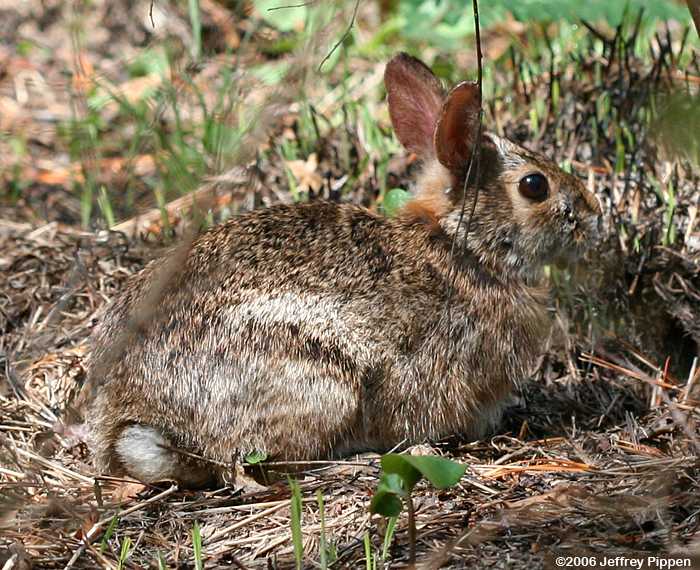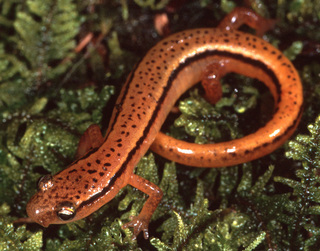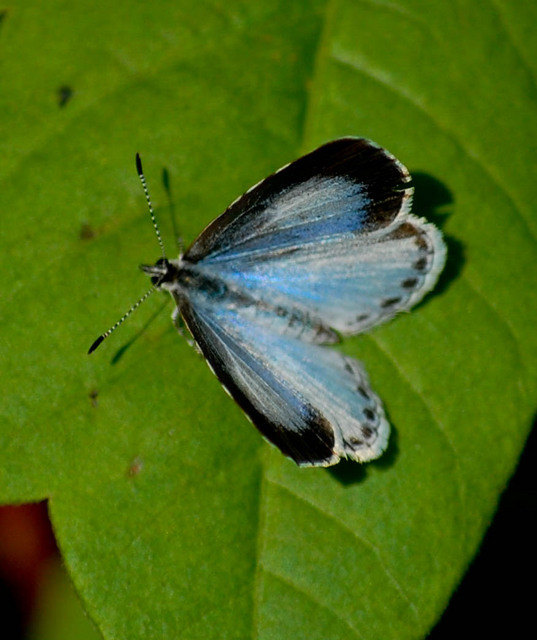The article published by Gillen. J. L & Kiviat. E. in Environmental Reviews and Case Studies , 2012 is available at the following link:
http://hudsonia.org/wpcontent/uploads/2013/03/GillenKiviatFracking.pdf
The premise of the study was to investigate the susceptibility of 15 species (1 mammal, 8 salamanders, 2 fishes, 1 butterfly and 3 vascular plants) to the environmental impacts of fracking which is a rapidly expanding business in the Marcellus-Utica region.
The quasi-endemic species were selected on the basis that they shared a 35-100% overlap biogeographical range with the Marcellus-Utica region; the average overlap is 68.4%, indicating a high potential for fracking induced habitat degradation. Information was gathered on the following criteria: natural history, habitat needs and legal status with regard to susceptibility to the chemical and physical effects of fracking on the environment.
Here is a brief review of the results:
Mammal: The Appalachian cottontail:
Image URL: http://www.jeffpippen.com/mammals/appycottontail060513-1613bckcrkz.jpg
This beautiful sister species to the New England cottontail is already in decline due to small populations separated by habitat fragmentation and destruction. Fracking effects on average 30 acres of forest for every site that is built. Due to its small population size and small geographic range, the cottontail is already a species that has high vulnerability status; it is suggested that fracking will exacerbate and increase forest destruction and fragmentation therefore increasing the risk of endangerment.
Salamanders: 8 species from the Plethodontidae family; lungless salamanders
Image URL: http://www.discoverlife.org/IM/I_NAT/0000/320/Eurycea_bislineata,I_NAT34.jpg
Salamanders are thought to have particular sensitivities to environmental change as they respire through the skin and therefore require a constant water source. The paper also states that forest fragmentation and destruction of the salamanders habit may cause both loss in species numbers and genetic diversity; this is because terrestrial salamanders have great difficulty in crossing roads and also struggle to move outside of their forest habitat. Multiple roads are built for access to fracking wells and not only have heavy truck traffic, but also provide an obstacle to terrestrial salamander movement and reduce movement by 51%. The paper also predicts that dispersal may be reduced by a staggering 91%.
Further concerns are also raised over effects of micro-climatic drying and salinization, the combined effects could lead to the elimination of salamanders from fracking localities and could lead to cumulative species loss.
Fish: the Bluebreast Darter
Image URL: http://upload.wikimedia.org/wikipedia/commons/5/5c/Etheostoma_camurum.jpg
The Bluebreast Darter and the Tounguetied Minow, according to classification by the Environmental Protection Agency both require water of very high quality and are very susceptible to water pollution. Studies by Rozel and Raven, 2012, show that there is a high probability of waste-water from fracking exploits entering local waterways and leaving stream fishes vulnerable to contamination.
Butterflies: the Appalachian azure
Image URL: http://www.discoverlife.org/IM/I_SOP/0015/640/Celastrina_neglectamajor,_Appalachian_Azure,I_SOP1560.jpg
This species of butterfly, the beautiful Appalachian azure, also has a high sensitivity to forest fragmentation. Furthermore the larvae of this butterfly feed on a plant species (Actaea rasemosa) which could be threatened by non-native plant invasion and by white-tailed deer, set to benefit from the forest fragmentation caused by fracking well and road construction.
Plants: Northern Wild Monkshood
This species of plant is listed as federally threatened plant with high susceptibility to soil contamination. It will also likely be affecting by forest fragmentation, increased soil salinity, and potential contamination from fracking waste water. Furthermore, this species has very narrow biogeographic localities with limited gene flow between isolated populations. It is also threatened by nonnative plant species and fracking is known to facilitate the spread of such plant species.
The conclusion of this article is that fracking could pose a threat to a very diverse range of species, this is particularly prevalent for species that are already threatened or have small and isolated populations. Although this study refers particularly to the Marcellus-Utica region, the wider implications of this study suggest a real need for the sustainable management of edemic species which could be affected by the fracking industry. This encompasses a wide range of threats, including: forest fragmentation, increased salinity of soils, decreased fresh water availability and potential exposure to toxic chemicals. In order to mitigate these threats and ensure future biodiversity, anthropogenic impacts need to be thoroughly studied so that the neccesary regulations can be put in place to manage and prevent species population decline. The need to careful management is also underlined, as the effects of climate chage, logging and other industrial activities will further compound the effects of fracking and make more species susceptible to decline and loss of diversity. Fracking is more than likely going to go ahead at the majority of proposed sites, but we have the opportunity to act early and preserve biodiversity at all levels.
This is a quote from the article summary:
Biodiversity at all levels, from genes to ecosystems, constitutes many important values to human society and ecosystem
functions, as well as the intrinsic importance of each species.Conserving biodiversity is important because each species has unique compounds, behaviors, and other information that we may be able to use to improve human health, biotechnology, and enjoyment.
Biodiversity is also of great value to the function of ecosystems—and we do not know how the elimination of certain species will affect ecosystem function.





No comments:
Post a Comment